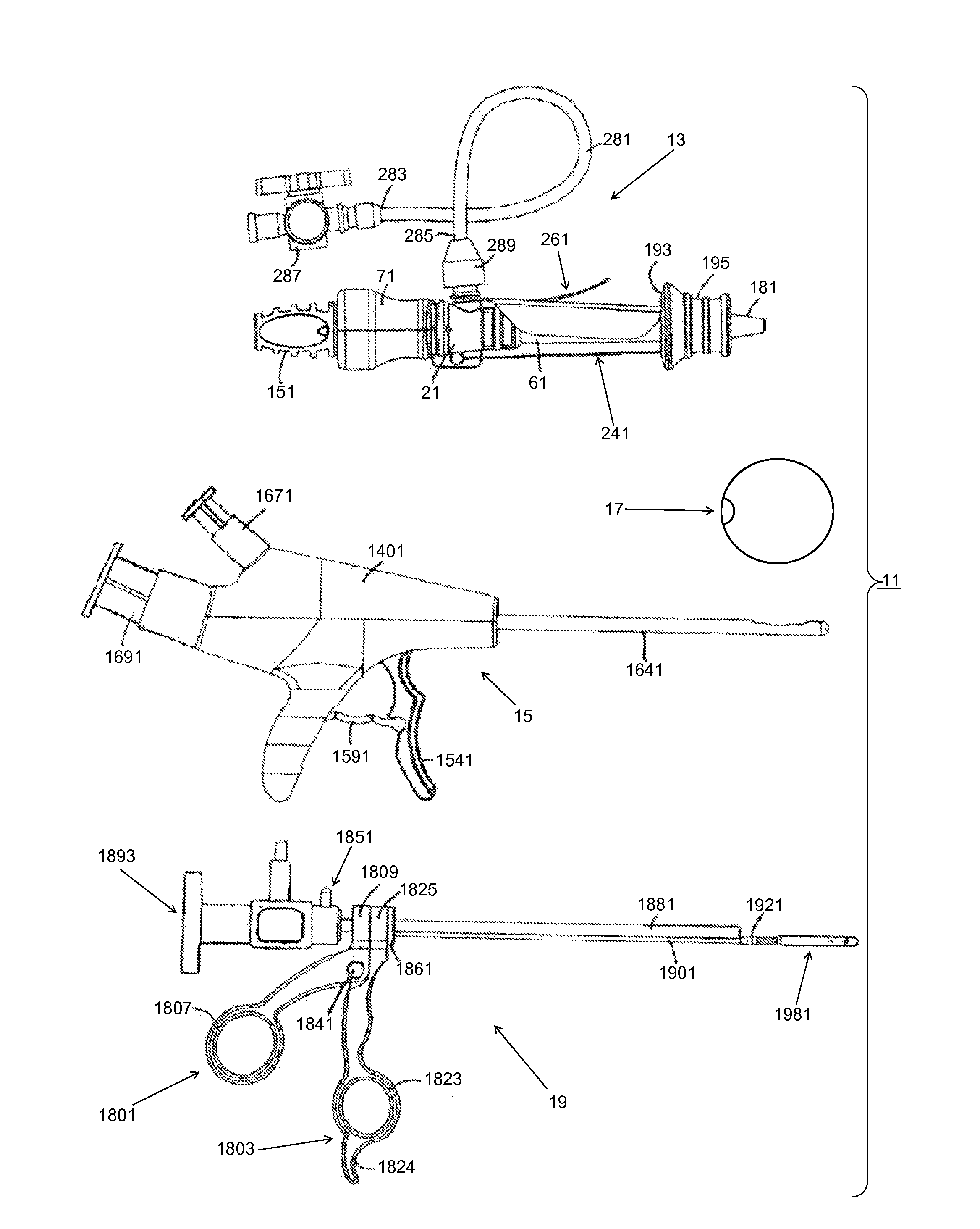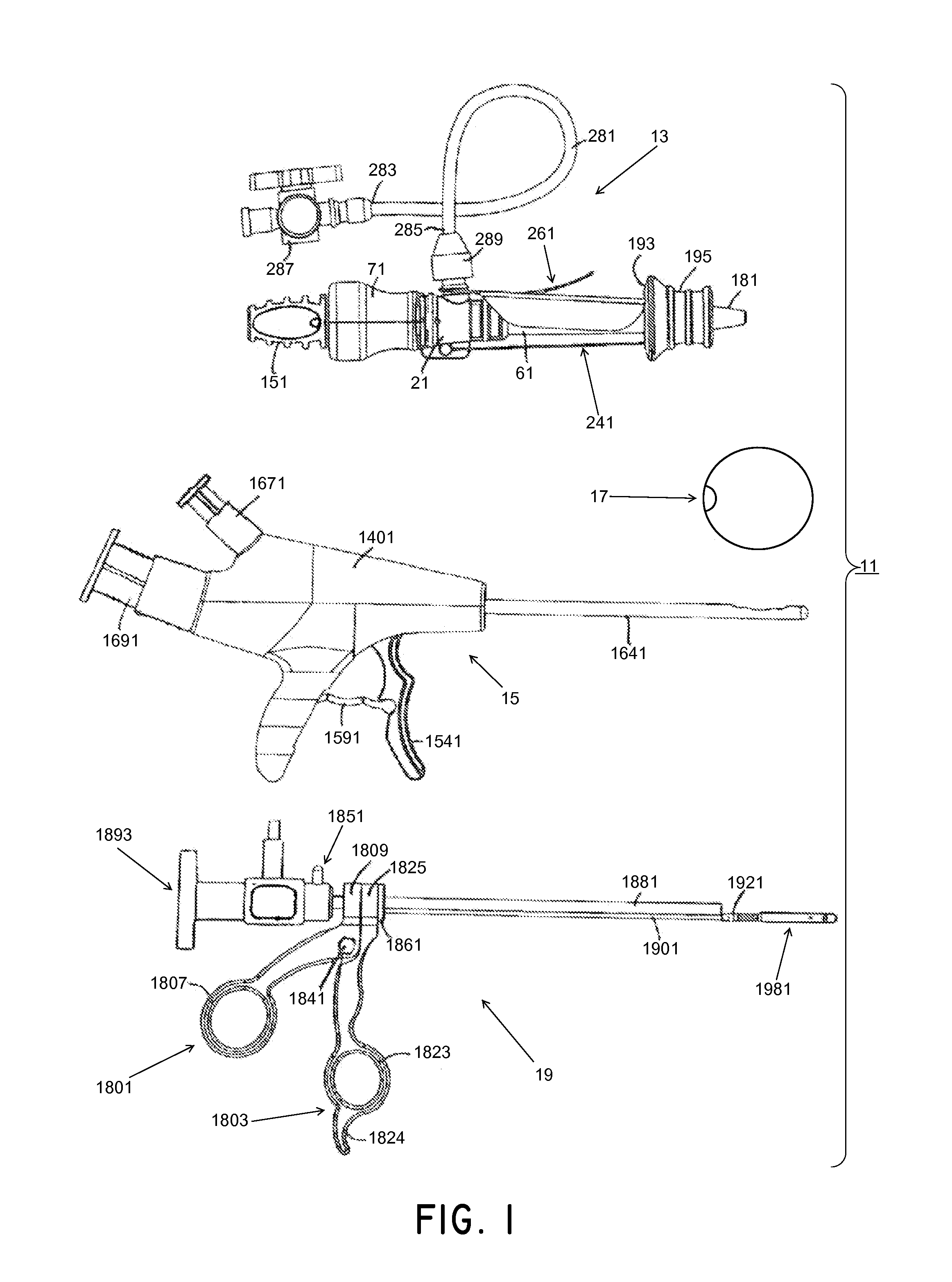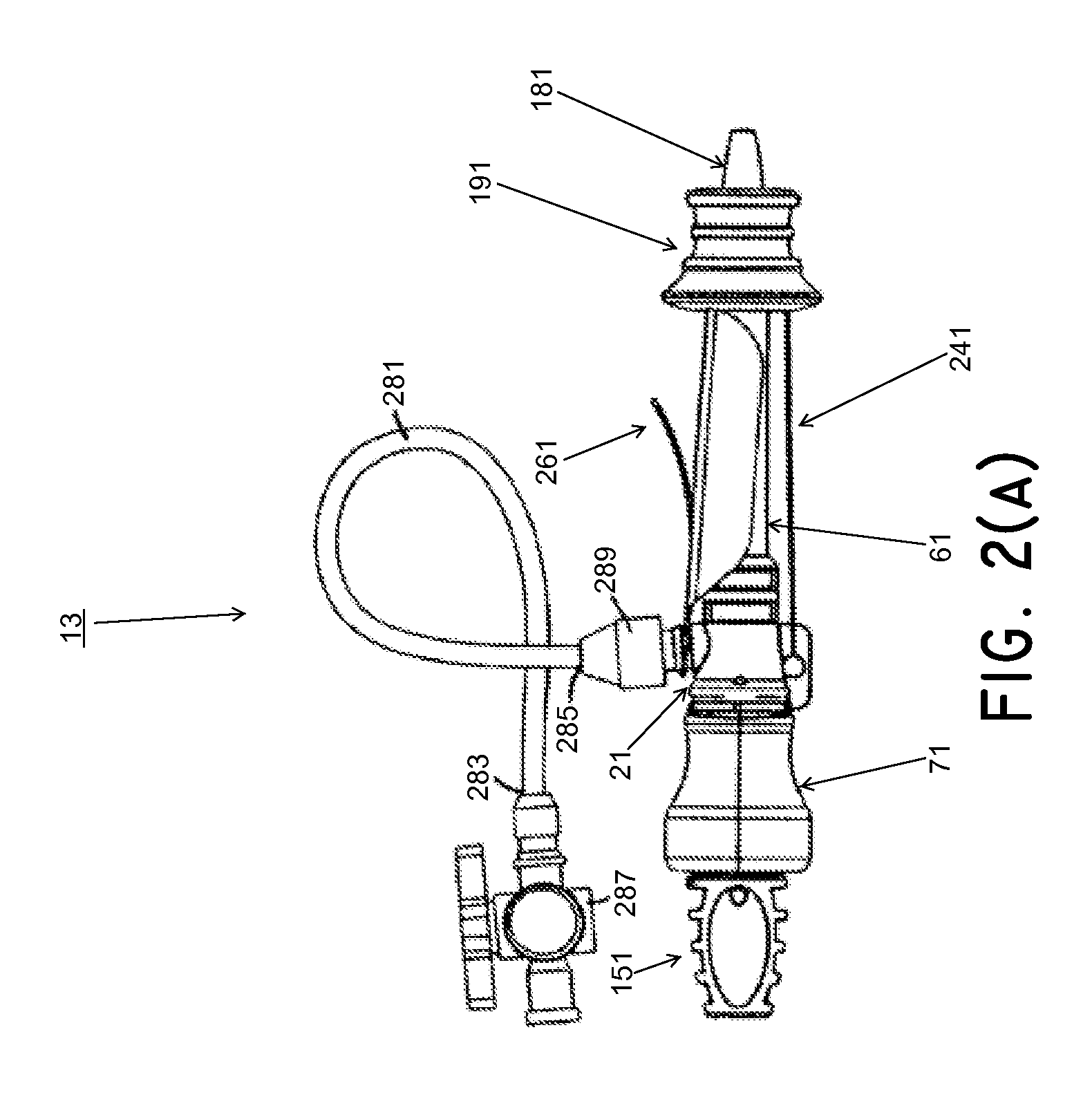Methods and systems for performing a medical procedure
a medical procedure and method technology, applied in the direction of surgical forceps, prostheses, catheters, etc., can solve the problems of high intravesical pressure, many undesirable effects of pressure waves, and affecting people of all ages
- Summary
- Abstract
- Description
- Claims
- Application Information
AI Technical Summary
Benefits of technology
Problems solved by technology
Method used
Image
Examples
Embodiment Construction
[0197]Medical devices, methods, and systems related thereto for use within the body are disclosed. The medical devices and medical systems can include pressurized therapeutic devices, implants, implant delivery devices, implant retrieval devices, expandable or compressible membrane enclosures or balloons, sponges, foams, attenuators, space occupying members, and space creating devices, and therapeutic devices. Though urology and use in the bladder will be primarily discussed, it will be understood that the systems and methods can be used elsewhere. The medical devices and medical systems can be used for many purposes and in many places within the body including, but not limited to, the following systems of the human body: cardiovascular, pulmonary, renal / urological, gastrointestinal, hepatic / biliary, gynecological, neurological, musculoskeletal, otorhinolaryngical and ophthalmic, as well as in and around organs of the body, and in intra- and inter-organ spaces.
[0198]In one particula...
PUM
 Login to View More
Login to View More Abstract
Description
Claims
Application Information
 Login to View More
Login to View More - R&D
- Intellectual Property
- Life Sciences
- Materials
- Tech Scout
- Unparalleled Data Quality
- Higher Quality Content
- 60% Fewer Hallucinations
Browse by: Latest US Patents, China's latest patents, Technical Efficacy Thesaurus, Application Domain, Technology Topic, Popular Technical Reports.
© 2025 PatSnap. All rights reserved.Legal|Privacy policy|Modern Slavery Act Transparency Statement|Sitemap|About US| Contact US: help@patsnap.com



